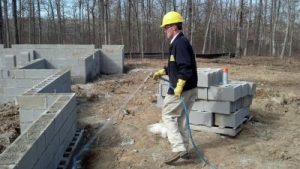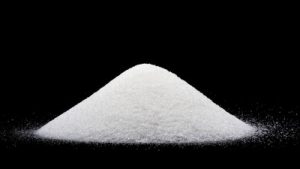
According to some researchers, termites cause damage of billions of dollars each year.
These insects feast inside walls, floors, furniture, destroying the most important and expensive investments, they can even damage insulation, books and documents.
The most reliable and efficient way to control termites is chemical soil treatment by using liquid termiticides (pesticides that can control or kill termites).
Hide content
- Liquid termiticides pros and cons
- Types of liquid termiticides
- Safety issues
- Precautionary measures
- Useful articles
- Helpful video
- Сonclusion
The termites most likely to have their colony underground (subterranian termites), but later they can establish a colony inside the wooden structures of the building (drywood termites).
The liquid soil termiticides are poured around the perimeter and beneath the house to prevent termites infiltrating the structure or just kill them all. There are special chemicals for protecting the wood itself.
Warning! General home insurance normally does not cover termite structural damage. Also, the termite control report is normally a condition for sale for a house.Here you can learn more information about another effective termite control remedies: Bora-Care, Boric acid, Borate, Fipronil, Chlorpyrifos, Chlordane, Borax, Timbor, Termidor, Terminator, Phantom, Lorsban, Biflex, Terro. You can choose different forms, such as – foam, powder.
Liquid termiticides pros and cons
The alternative to liquid treatment for termites is a termite baiting.
There are few advantages that make liquid termiticides a superior yet safe choice for the most cases.
Pros:
- Reliablity. termites might just simply not stumble on any bait and infiltrate the structure directly. The termiticides are applied right around and beneath the building thus protecting it directly.
- Cost effectiveness. Albeit a great volume is required for the liquid termite control, it is considered cheaper than the termite baiting.
- Deep soil penetration. It ensures larger area of effect than that of a dust termiticide.
Cons:
- Toxicity. The most popular and effective chemical, Fipronil, though used for ticks control on cats and dogs, is very toxic to bees and aquatic inhabitants, so it’s not recommended to use it near water bodies/bee harvest zones, you can rather pick an environmental friendly Chlorantraniliprole-based termiticide or treat the wood itself with a solution.
- Dependence on soil contents conditions. Soil clay content, pH, organic matter content, particularly organic carbon content may impact the duration of the termiticide chemical barrier, so some soil sample examination is recommended before applying termiticides (the soil analisys form local land grant extension entomologist should be inexpensive or even free).
Here you can learn more information about termite bait systems: Advance, Green, CSIRO, Nemesis, Exterra, Firstline, Terminate. Also find out how to make baits by yourself and how to refill them?
Types of liquid termiticides
Liquid termiticides can be either repellent or non-repellent. The repellent termiticides are designed to repel termites away from structures and have a specific usage – mostly in preconstriction treatment(before the structure is built) and for fast control of subterranian termites.The main problem with repellent termiticids is that there shouldnt be any gaps untreated, for termites can exploit them sooner or later.
Liquid termite treatment products:
- Talstar Professional (Bifenthin) – very low cost, reliable, effective, has been applied for years.
- Bifen Insecticide / Termiticide (Generic Bifenthrin) – a lower cost analogue.
- Dragnet FT (Permethrin) – highly toxic and repellent to subterranean termites.
- Prelude (Permethrin) – is a low odor analogue, relatively short living termite control product thus does not cause a long lasting soil contamination.
The non-repellent termiticides do not repel, but stick to termites, intoxicating them one by one and eventually killing the whole population over time. This type is useful for controling large areas and is often used for house protection.
- Termidor (Fipronyl) – the most popular termite control product in USA and Australia, widely used by many pest control companies. Considered the most effective termiticide and used by a lot of pest control companies.
- Taurus – (Fipronyl) a cheaper analogue.
- Altriset – (Chlorantraniliprole) eco-friendly product, but a bit less effective. it is the best option, when environmental safety in a major concern.
- Premise 2 / Premise 75 (Imidichloprid) – the most popular one in most countries. The main chemical component is derived from tobacco leaves, it causes termites to die in large quantities in the same place. That frightens other termites and banishes them naturaly.
- I MaxxPro 2F / I MaxxPro WP (Imidichloprid) – a cheaper analogue.
- Phantom – (Chlofenapyr) – very popular one, absolutely undetectable by termites, so it can be applied to few spots in small quantities, which makes it economical.
- Bora Care – (Sodium Borate) – a special wood treatment chemical, which will last the life of the wood when applied.
Here you can learn more information about effective treatment method called tenting (fumigation): dangers for termites, preparing for fumigation and cleaning after, how long does this procedure last?
Safety issues
Most liquid soil-based termiticides are considered safe when applied properly, according to the instructions.
Modern liquid termiticides do not cause problems to asthmatics when drying out and do not cause long term soild pollution.
The Fypronyl-based termiticides are considered the most toxic ones (and the most effective), however, they still have ultra-low hazard to humans, cats and dogs, but they can be deadly to bees, birds and aquatic inhabitants, so it’s not recommended to use them near water bodies.
Because of such a specific toxicity Fypronyl termiticides were banned in European Union and Japan, however they are widely used in USA and Australia. Imidichloprid pesticides are somewhat toxic to mammals and deadly to bees, they are also banned in several countries.
Chlofenapyr is relatively low toxic to mammals and aquatic life. The repellent termiticides are toxic to bees aswell and Permethrin is relatively safe to mammals, and it is even used in flea control collars.Precautionary measures
Most termiticides are not be dangerous upon skin contact, however they can be dangerous if accumulated in food, so the instructions of correct use should always be applied to avoid misuse and animal/environment intoxication.
The state legal concerns of chemical use should be observed before applying any termiticides.
Useful articles
If you interested in more information of termites we recommend you to read the following articles:
- All types of termites. Are they harmful to humans? Can they bite you? And what is the difference between drywood and subterranean ones?
- What does swarmers of different species look like: drywood, subterranean, formosan?
- Signs of infestation outside and in the house: in walls or furniture.
- How to treat them at home and in the yard: in wood or in fence. How long this process lasts and what is pre-construction and soil treatment?
- What does termite holes look like? What is droppings and is it toxic to humans? Do termites make noises?
- Posible termite damage, how does it look like? Examples of damage in walls and wood floors.
- All about flying termites: how do they look like, swarming season and what to do if there are swarmers in your house?
- How do they do nests and mounds? How to find it in your garden or inside the house?
- Termite life cycle – from egg to larvae. And social hierarchy: workers, soldiers, queen.
- Did you know that termites can infest living trees, for example a palm or a pine tree. They also like to live in stumps.
- You can prevent the infestation by using barriers, such as: HomeGuard, Physical systems, Safeguard, Stainless steel mesh, Kordon.
- If you want to get rid of termites naturally, learn more about such methods as: heat or cold treatment, orange oil, using nematodes.
Helpful video
How to do liquid termite treatment:
Сonclusion
The proper liquid soil termiticide treatment is considered the most cost effective control measure, it can protect a structure for 5 to 10 years.
It is very important to be applied proactively, for by the time when you notice any flying termites in your house, there likely to be thousands of them underneath.
The treatment can be even more reliable if done by professional pest control companies, because they often provide guaranteed free treatment in case termites will return.
It is highly recommended to consult any local pest control company before trying to apply any termiticides youself.

